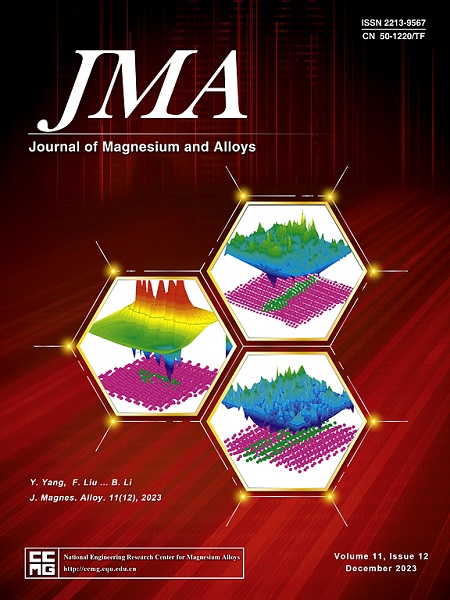Study on M2-type macrophage exosomes coated with S-HA to modify magnesium alloy surface for vascular scaffolds
IF 13.8
1区 材料科学
Q1 METALLURGY & METALLURGICAL ENGINEERING
引用次数: 0
Abstract
Around the world, acute ischemic stroke (IS) is a major cause of mortality and acquired disability, one of the most popular and clinically successful treatments for cardiovascular and cerebrovascular disorders is stent intervention. The Mg-Zn-Y-Nd alloy (ZE21B magnesium alloy), which is biodegradable, offers good mechanical and biocompatibility qualities and a promising future in vascular stents. However, the magnesium alloy stent degrades too quickly after implantation, and issues with restenosis and inadequate endothelialization have made it impossible to use it further. In this study, the corrosion resistance of magnesium alloy samples was firstly enhanced by fluorination, followed by self-assembled polydopamine coating, and finally, Exo@S-HA core-shell structured nanoparticles were immobilized on the surface of the coating by ultrasonic spraying. First, exosome fluorescence labeling, AFM, XPS, and FT-IR were used to show that the MgF2/PDA/Exo@S-HA composite coating was successfully prepared, and the good hydrophilicity of the composite coating was proved by the WCA, which is favorable for cell adhesion and proliferation. Subsequent tests on blood and cells demonstrated the beneficial biological properties of the composite coating, including anticoagulation, anti-inflammatory, anti-proliferation, and endothelial cell proliferation. In conclusion, the composite coating has potential applications in surface modification of cardiovascular biomaterials.

S-HA包被m2型巨噬细胞外泌体修饰血管支架用镁合金表面的研究
在世界范围内,急性缺血性脑卒中(IS)是死亡和获得性残疾的主要原因,支架介入治疗是最流行和临床成功的心脑血管疾病治疗方法之一。Mg-Zn-Y-Nd合金(ZE21B镁合金)具有生物可降解性,具有良好的机械和生物相容性,在血管支架中具有广阔的应用前景。然而,镁合金支架在植入后降解过快,再狭窄和内皮化不足的问题使其无法进一步使用。本研究首先采用氟化处理增强镁合金样品的耐蚀性,然后采用自组装聚多巴胺涂层,最后采用超声喷涂将Exo@S-HA核壳结构纳米颗粒固定在涂层表面。首先,利用外泌体荧光标记、AFM、XPS、FT-IR等技术证明成功制备了MgF2/PDA/Exo@S-HA复合涂层,并通过WCA验证了复合涂层具有良好的亲水性,有利于细胞粘附和增殖。随后对血液和细胞的测试证明了复合涂层的有益生物特性,包括抗凝血、抗炎、抗增殖和内皮细胞增殖。综上所述,复合涂层在心血管生物材料的表面改性方面具有潜在的应用前景。
本文章由计算机程序翻译,如有差异,请以英文原文为准。
求助全文
约1分钟内获得全文
求助全文
来源期刊

Journal of Magnesium and Alloys
Engineering-Mechanics of Materials
CiteScore
20.20
自引率
14.80%
发文量
52
审稿时长
59 days
期刊介绍:
The Journal of Magnesium and Alloys serves as a global platform for both theoretical and experimental studies in magnesium science and engineering. It welcomes submissions investigating various scientific and engineering factors impacting the metallurgy, processing, microstructure, properties, and applications of magnesium and alloys. The journal covers all aspects of magnesium and alloy research, including raw materials, alloy casting, extrusion and deformation, corrosion and surface treatment, joining and machining, simulation and modeling, microstructure evolution and mechanical properties, new alloy development, magnesium-based composites, bio-materials and energy materials, applications, and recycling.
 求助内容:
求助内容: 应助结果提醒方式:
应助结果提醒方式:


